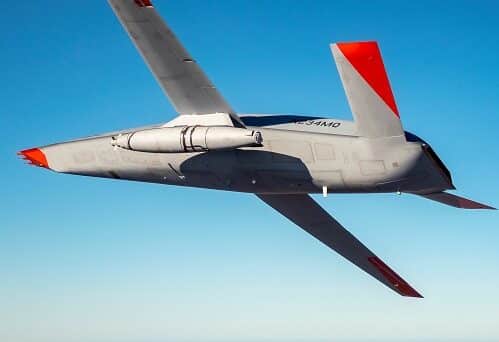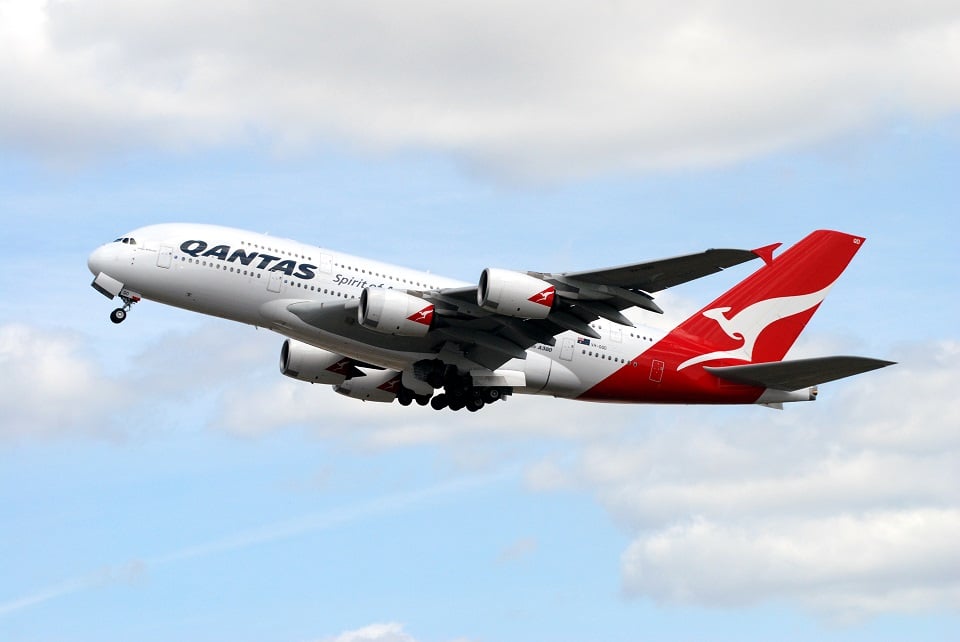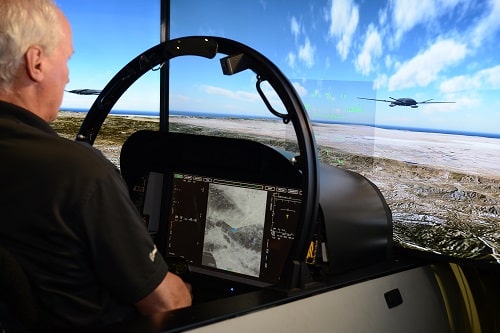Aviation
Boeing Demonstrates Open Autonomy Architecture for Manned-Unmanned Teaming with MQ-25
The U.S. Navy will be able to improve mission effectiveness by integrating manned-unmanned teaming (MUM-T) capability

The U.S. Navy will be able to improve mission effectiveness by integrating manned-unmanned teaming (MUM-T) capability at speed and scale due to a new open autonomous architecture for MQ-25 that Boeing [NYSE: BA] has digitally demonstrated.
A Boeing-led team virtually demonstrated how other aircraft can use MQ-25’s architecture and task it to conduct tanking and intelligence, surveillance and reconnaissance (ISR) missions – all within the mission airspace and without traditional communications with the ship-based ground control station.
Boeing’s MUM-T demonstration included Northrop Grumman’s E-2D Advanced Hawkeye command and control aircraft, Boeing’s P-8A Poseidon maritime patrol and reconnaissance aircraft, and Boeing’s F/A-18 Block III Super Hornet fighter jet. Using their existing operational flight program software and data links, the aircraft safely and efficiently tasked four virtual, autonomous MQ-25s to conduct ISR missions. The F/A-18 also used its advanced tactical data links and Boeing’s conceptual “Project Black Ice” crew vehicle interface, which significantly reduced aircrew workload.
Using an onboard autonomy framework developed by Boeing subsidiary Aurora Flight Sciences, the MQ-25 autonomously did the rest – including validating the command against its operational constraints, planning its route and conducting its search pattern, among many other tasks.
Aurora also created and demonstrated a prototype platform abstraction layer – a software boundary that decouples MQ-25’s flight safety and flight critical components from mission software and sensor hardware. This commercial best practice allows third-party “app” integration on MQ-25. Using an Aurora-provided software development kit, Naval Air Warfare Center Aircraft Division created a new radar search application for MQ-25 that was successfully used during the demonstration.
The demonstration was in line with the Navy’s Unmanned Campaign Framework’s potential for future war fighting. The autonomy, sensors, interface exchanges, and crew vehicle interfaces needed for MUM-T will continue to be improved by Boeing.

Aviation
Lost Tool Found in Qantas A380 After 34 Flights

An Australian Transportation Safety Bureau (ATSB) investigation recently revealed that a Qantas A380 operated 34 flights with a 1.25-meter nylon tool lodged in one of its engines.
This turning tool, used during borescope inspections to rotate the intermediate-pressure compressor, was left behind during scheduled maintenance at Los Angeles on December 6, 2023. It remained inside the engine until it was discovered by maintenance staff during a subsequent check at Los Angeles on January 1, 2024.
China Takes the Lead in Sixth-Generation Fighters with White Emperor B
The ATSB report highlights two critical lapses. First, maintenance engineers failed to notice the tool during final checks for foreign objects after the borescope inspection. Second, the lost tool procedure was not activated when the tool was identified as missing.
The certifying engineer ultimately cleared the aircraft for service without accounting for the misplaced tool. During the time qantas films the tool was inside, the A380 completed 34 flight cycles, accumulating nearly 294 hours without any noticeable effect on engine performance.
Although the tool was deformed by high-energy airflow within the engine, there was no reported damage to the engine itself. ATSB Chief Commissioner Angus Mitchell commented.
India’s C-295 to Gain Advanced Weapons for Maritime Surveillance
“This incident underscores the importance of following established maintenance protocols. Engineers missed the tool during foreign object checks, and the required lost tool procedure wasn’t started after realizing the tool was missing.”
Following the investigation, the airline issued a safety directive, urging all engineering and tool storage teams to adhere strictly to these protocols to prevent similar incidents in the future.
A qantas spokesperson stated, “While the tool didn’t impact engine performance, we take this incident very seriously. It is critical to follow the correct lost tool procedures.”
-

 Aviation2 months ago
Aviation2 months agoBoeing confirms 797: A New Era for Mid-Size Aircraft
-

 Aviation2 months ago
Aviation2 months agoMicrosoft Flight Simulator Raises $3 Million to Bring Back the An-225 Mriya
-

 Aviation2 months ago
Aviation2 months agoLockheed and Tata Team Up to Build C-130J MRO Facility in India
-

 Airlines2 months ago
Airlines2 months agoQantas Engineers Stage Walkout Over Cost of Living Concerns
-

 Airlines2 months ago
Airlines2 months agoQatar Citizens Can Travel to the United States Without a Visa
-

 Aviation2 months ago
Aviation2 months agoBoeing Offers 25% Pay Increase & Promise to Build Next Plane in Seattle
-

 Aviation2 months ago
Aviation2 months agoQatar Airways bans these new Electronic Devices on plane
-

 Airlines2 months ago
Airlines2 months agoEmirates Ends 28-Year Singapore-Melbourne Fifth Freedom Route










